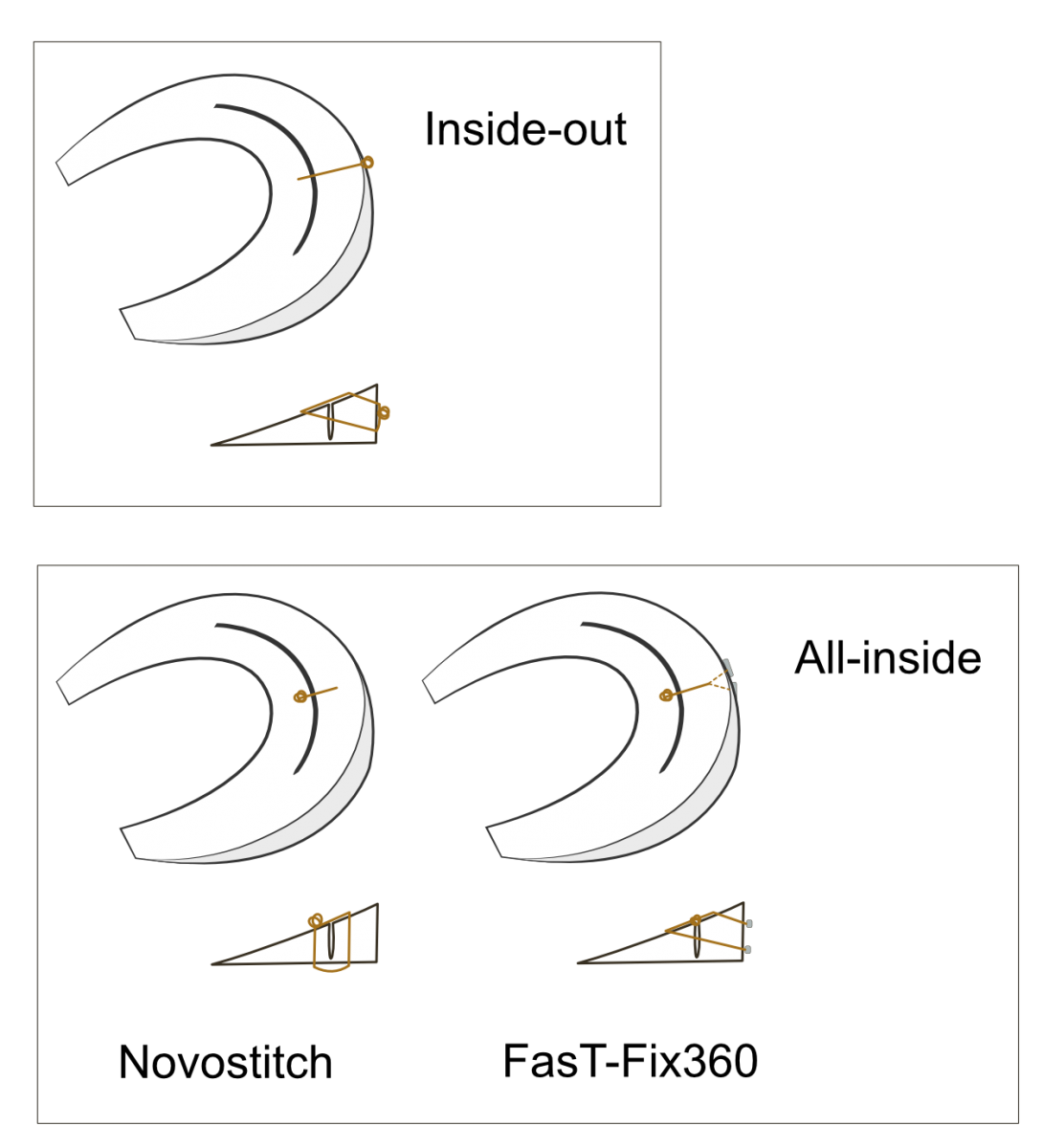This paper compiles the information of 17 published clinical studies focused on rehabilitation after meniscal repair.
Meniscal repair techniques
The authors of this peer-reviewed paper note that over the last two decades, although the majority of surgeries on the meniscus remain meniscectomies, there has been a persistent increase in meniscal repairs following on significant advances in surgical techniques and repair devices.
You can see how these differ in the illustration (editor's illustration but based on the one in the article) -
Other factors affecting meniscal repair healing
The authors discuss other factors affecting healing in meniscal repair:
- the blood supply, which is limited to the outer one third to quarter of the meniscus
- the timing and type of tear
- - acute traumatic tears heal better than chronic non-traumatic tears
- - longitudinal tears heal better than radial tears
- age - healing is better in younger individuals
- knee biomechanics
- post-operative range of motion (ROM)
- weight-bearing status
Developing a post-operative plan
After reviewing all the different papers, however, the authors found a lack of consensus regarding the optimal postoperative rehabilitation protocol. It seems that "high degrees of knee flexion may be safe, but these data are limited to a few cadaveric studies. The impact of rotation and torsion forces has not been determined, but have implications for the return to sport and work. It is unclear whether larger joint forces associated with running or jumping threaten the meniscal repair. An accelerated rehabilitation protocol may be safely implemented for appropriate patients, but it is unclear how the type of meniscal tear and the repair technique should affect the postoperative programme. Additional biomechanical studies are needed to better clarify the interplay between tear type, repair method, knee loading, knee positioning and torsional forces. Clinical studies investigating these specific elements will help to optimise patient outcomes."

